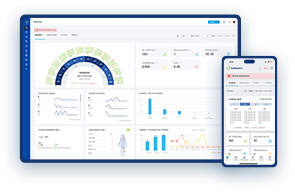
Avoiding Machine Injuries due to Failure of Presence Sensors
Machine operators are a vital cog in the industrial production cycle. For a long time, their safety relied on manual safeguards that required human intervention like LOTO, machine maintenance, and more.
Nowadays, automated presence-sensing devices like light curtains and motion-detecting mats, have made it easier and safer for loading parts or running routine maintenance checks on machines. These devices provide maximum visibility of a machine’s danger zone and are designed to automatically halt hazardous motion when an operator enters its sensing field or at point of operation.
While Presence Sensors have created a safe proximity while handling dangerous machinery, the improper application, use, malfunction, design, or mounting of sensors can result in serious accidents. With the growing adoption of industrial automation, EHS software and sensor technology, it is pivotal to know the limitations of various technologies that are generally unrecognized.
Key Considerations while Installing Presence-Sensing Devices
- Make sure that the sensors are mounted or installed at an appropriate level to ensure that access is limited Around, Under, Through, or Over the sensing field.
- Follow OSHA’s safety distance formula to make sure that sensors are fixed at an optimal distance, where the machine automatically shuts down before a worker reaches its hazard zone from the point of operation.
- Be wary against machine emissions;such as ejected machine parts, workpieces, or metal shavings, since presence sensing devices do not act as a physical barrier.
- Use secondary safeguards as a second line of defense in case of device malfunctions. These include PPE’s, Lockout and Tagout (LOTO), Barrier guards, automated screens and doors, guard-locking switches, and more.
- Choose the correct sensor according to your industrial application. This includes photoelectric sensors, Laser scanners, pressure-sensitive mats, hand detection sensor, or a camera vision system.
Machine-related injuries can be as gruesome as it gets. With nearly 34,000 injuries per year, automated presence-sensing devices have effectively curtailed the injury toll – ensuring better operator safety and enhanced productivity. Taking that extra bit of precaution in proper installation and customization of sensory devices can pave the way for a zero-incident workplace.
Related read: Our listing of the best EHS Software.
This post first appeared on the Safetymint Newsletter. To get the newsletter articles delivered to your email, sign-up below:
Joshua Martyn was a content manager at Safetymint, crafting helpful contents that enlighten readers and EHS professionals alike, about fresh trends, technologies and perspectives from the world of safety.




